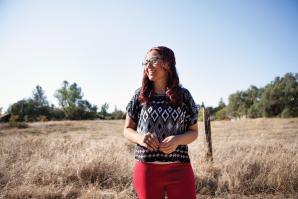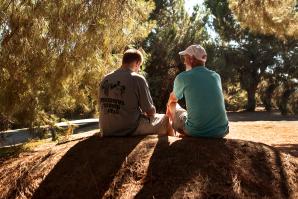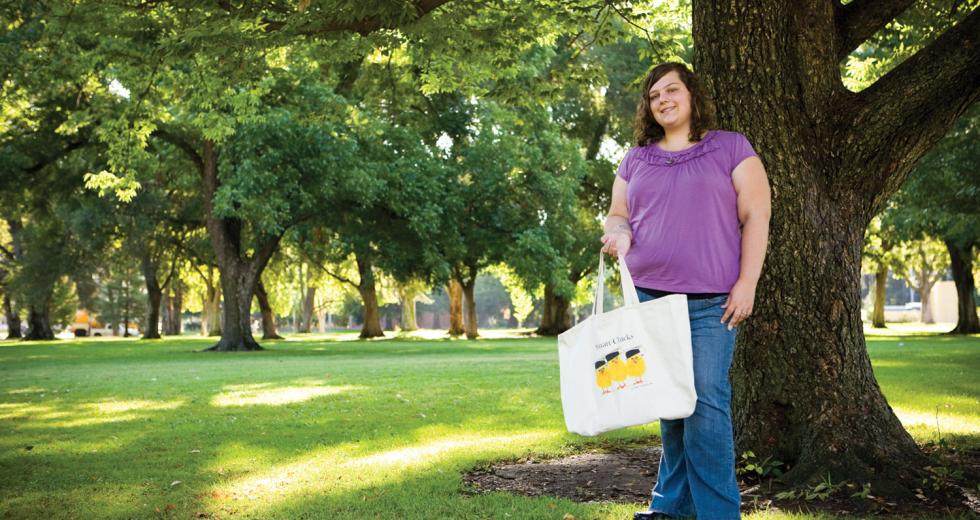Nearly 70 percent of California’s high school foster youth dropped out last year. Of the 10 percent that make it to higher education, just 3 percent are likely to graduate.
College can be a tough time for any student, but for young adults emerging from incarceration or foster care, the transition can prove too tough to endure. That’s why Daren Maeda founded Sacramento-based Linkage to Education as a way to help foster youth buy textbooks, network with peers for support and apply for tuition waivers and financial aid.
“When they meet us, it’s like meeting another friend on campus, so they don’t feel so isolated, especially during the first year of school,” says Natalia Castro, a student at American River College and Linkage staff member who has been involved with the program since her exit from the Warren E. Thornton Youth Center’s girl’s school in 2006, a program that followed her stint in juvenile hall a few months prior.
“I ended up getting [my GED] while I was locked up,” Castro says. “One of the teachers at the Warren E. Thornton Youth Center recommended me to Daren. He came in and talked to me about college, which was surprising. He enrolled me for everything, so when I got out, I was able to start school two weeks later.”
Linkage conducts outreach programs in group homes, juvenile halls and foster youth classes. Since its inception in 1988, the program has helped more than 1,000 youth throughout the Sacramento region attend college with nearly 60 percent staying engaged with the program and becoming self-sufficient.
“We’re encouraged to pursue grants and scholarships and to stay away from student loans,” Castro says. “We are doing a lot of new enrollment and getting a lot of first-time students onto campuses. Right now we’re really busy with scheduling and buying textbooks.”
Even with such resources, there is a tendency for college students who are former foster and probation youth to feel isolated and out of place. Through the contributions of Women in Philanthropy, a group of local female professionals associated with United Way California Capital Region, a new network has surfaced to combat such emotional struggles and help youth plug into education.
Smart Chicks, a social group for collegiate women, was launched as an arm of Linkage to Education in July because girls, specifically, in the foster youth and probation systems, tend to be more isolated than their peers. They needed a network for young women with similar experiences, and they needed positive role models and experiences from which to draw.
Program coordinator Whitney Rhodes says a leadership position with Smart Chicks was the perfect match for her. The 22-year-old Sacramento State student entered the foster care system in Humboldt County at age 12 after writing a letter to the county saying that her mother was abusing drugs and neglecting her and her two siblings.
“When I was young, I was involved in a lot of girl groups: Girl Scouts, a girls meditation circle, a girls group therapy,” she says.
Eventually she aged out of the foster system, moved to Sacramento and found a staff position at Linkage to Education. “That was a good fit because I feel like I’m a positive influence, and I have a ton of creativity to make the program holistic and beneficial,” she says. “Because my peers are my same age, it’s necessary that I’m clean and positive and my MySpace and my Facebook are positive. I love school. I love people, and this has been a healing process for me, too. I recognize the importance and significance of community, and whoever runs this program has to be passionate about that.”
Her passion has attracted nearly 50 young women to Smart Chicks though activities are tailored for groups of just five or six. The small groups attend theater performances, cultural events, River Cats and Monarchs games and wellness classes. Eventually, Rhodes hopes to tie in a larger wellness component that includes healthy cooking, outdoor recreation and emotional therapy.
Most event tickets are donated, but for the rest, Rhodes and her team sell canvas logo bags. She also writes small grants and seeks donations. Funding for Linkage to Education comes via grants, the United Way, federal funds and private donations.
“The Women in Philanthropy have probably been the most supportive group we’ve had,” Rhodes says. “They just love us. They invite us to their events, and they buy more bags than anybody else. When there is an opportunity, they call us and see if we want to be involved. They are always there if I need them, and I feel like I can call if I need anything.”
Women in Philanthropy is just one piece of the funding pie that feeds foster care and outreach services in greater Sacramento.
Through programs such as Linkage, United Way California Capital Region, an independent local affiliate of United Way of America that serves Amador, El Dorado, Placer, Sacramento and Yolo counties, assisted nearly 315 foster youth in preparing to live independently last year.
“It’s the irony of the nonprofit world: As the need increases, the resources decrease.”
Steve Heath, president, United Way California Capital Region
There are nearly 120,000 foster youth in California. Of that number, 6,000 live in the five-county Sacramento region. Of those, 60 percent have been abused or neglected, and 250 age out of the system locally each year, according to Sacramento County. For a majority of foster youth, public support stops at age 18, but even with support, things can get tough.
“Demand for foster services are up, as you would expect with the (economic) stresses on families and the problems those can create at a time when it’s getting harder and harder to find families willing to take in foster youth,” says UWCCR President Steve Heath. “It’s the irony of the nonprofit world: As the need increases, the resources decrease.”
The silver lining at United Way is that funding this year is nearly equal to that of last year, according to Heath.
“It’s really about the environment in which we raise money and the people from which we raise money. It’s not dependent on special events. It’s going into the workplace and presenting opportunities to give … through payroll deductions,” Heath says. “We’re talking to people who still have jobs and can look around them and see what’s happening to their colleagues and former colleagues. The only thing that has kept revenue from growing is that corporate matches and contributions are not as great because corporate profits have not been as great.”
UWCCR corporate contributions account for nearly 16 percent of revenue, but it’s too soon to know what this year’s numbers will bring. Heath projects overall revenue will be down about 5 percent this year, but in today’s economy “flat is the new up.”
Much of the dip in revenue could be attributable to the California State Employees Charitable Campaign, the organization’s largest account.
“Last year, the employee pledge was close to $4.3 million,” Heath says. “So far this year, and it’s amazing, it’s not off much at all, especially when you consider what’s been happening to state employees. Typically there is a 3 percent cancellation rate. We’re running three times that at the moment, but I think it’s still remarkable that it isn’t higher.”
In the 2008 fiscal year, United Way California Capital Region allocated $64,000 to Linkage to Education as part of its umbrella program, Foster Youth Flourish. A healthy portion of that came from Women in Philanthropy.
Women in Philanthropy is a group of diverse women from across the region in various fields of work dedicated to helping local foster youth. Members are required to give a minimum of $1,500 every year to United Way’s Community Impact Fund. Through the fund, the money has, for the past five years, been funneled to programming within Foster Youth Flourish, which helps foster children to receive the mentoring, tutoring and job skills they need to support themselves.
From July 2008 to June 2009, Women in Philanthropy’s 250 members donated more than $100,000 to Foster Youth Flourish. Since 2003, members have raised nearly $815,000 for the project. It appears to be money well spent. This past year, 92 percent of participants had increases in school attendance. Foster Youth Flourish also helps to fund St. Patrick’s Home for Children and the Child Abuse Prevention Council of Sacramento.
After this year’s giving cycle ends in June 2010, the focus of contributions from Women in Philanthropy will change. As the result of community feedback, United Way California Capital Region and Women in Philanthropy will determine new goals and choose new programs through which to fund foster programming in the key areas of health, income and education.
“Our goals will still primarily focus on the emancipation age group of the foster kids,” says WIP founding chair Char Donnermeyer. “The agencies (currently being funded) are still in the picture until June of next year, but the campaigns from September on will be somewhat vague because on June 30 (2010) we may have new or different partners.”
Recommended For You

Making Cents
Preparing foster youth for their financial future.
For many foster youth, establishing stability within in the foster care system is exceedingly difficult. But it’s after emancipation that the realities of financial independence become even more challenging.

Seen & Not Heard
Child advocates could fundamentally shift foster care outcomes, if only there were more volunteers
Over half a million kids live in foster care in the U.S. as a result of abuse, neglect or abandonment. Because they can’t advocate for themselves, many become victims a second time, lost in an overburdened child welfare system that can’t pay close attention to each child. But one program is drastically improving outcomes for foster youth, despite the overwhelming odds.



